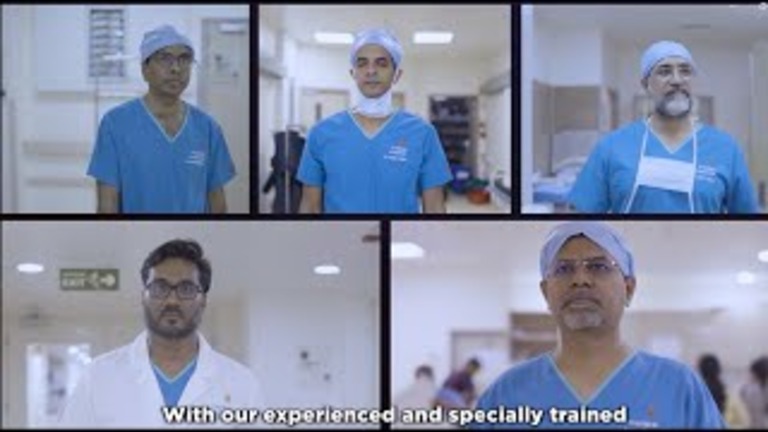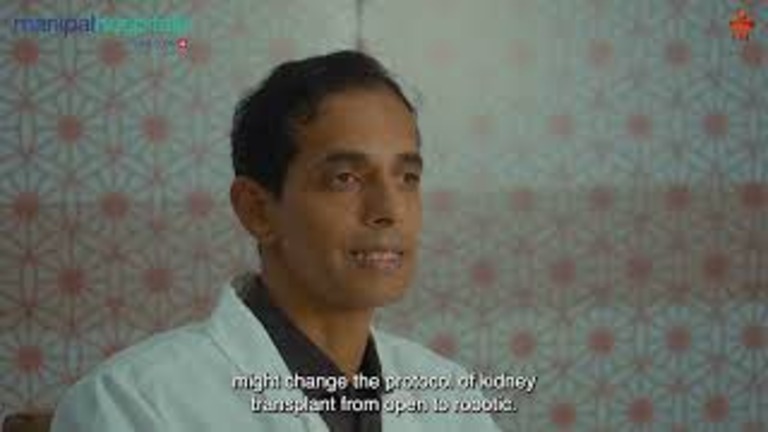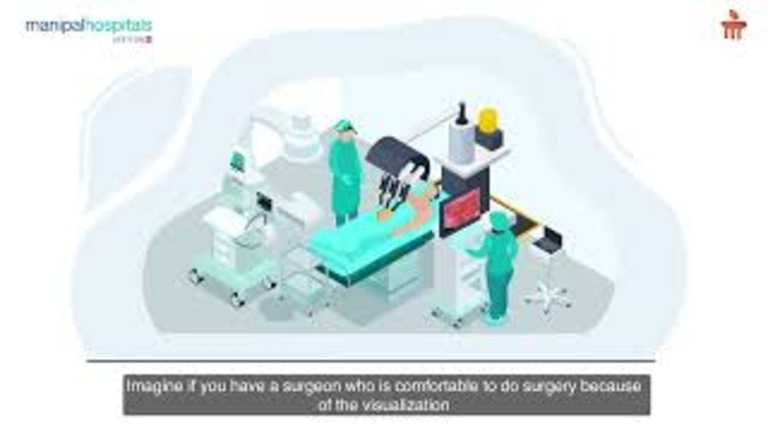-
Book Appointments & Health Checkup Packages
- Access Lab Reports
-
-
Book Appointments & Health Checkup Packages
-
Centre of
Excellence
Centre of Excellence
Other Specialities
- Accident and Emergency Care
- Andrology
- Anesthesiology
- Bariatric Surgery
- Clinical Psychology
- Dental Medicine
- Dermatology
- Diabetes and Endocrinology
- Ear Nose Throat
- Electrophysiology
- Fetal Medicine
- General Medicine
- General Surgery
- Hematology
- Hepatobiliary Surgery
- ICU and Critical Care
- Infectious Disease
- Internal Medicine
- IVF and Infertility
- Laparoscopic Surgery
- Liver Transplantation Surgery
- Microbiology
- Neonatology & NICU
- Nuclear Medicine
- Nutrition And Dietetics
- Ophthalmology
- Paediatric Infectious Disease
- Paediatric Neurology
- Pain Medicine
- Pathology
- Pharmacy
- Physiotherapy
- Plastic And Cosmetic Surgery
- Podiatric Surgery
- Psychiatry
- Psychology
- Pulmonology (Respiratory and Sleep Medicine)
- Radiology
- Rehabilitation Medicine
- Robotic Assisted Surgery
- Sports Medicine
- Vascular and Endovascular Surgery
Speciality Clinics
- Doctors
- Whitefield
- International Patients



Clinics








- Self Registration
- In-Patient Deposit
- Mars - Ambulance
- Home Care
- Organ Donation
- Corporate & PSU
- Insurance Helpdesk
- Awards And Achievements
- Manipal Insider
- Careers
- Contact Us


Robotic Assisted Surgery
Robotic Surgery in Bangalore
Robotic-assisted surgery has gained immense popularity worldwide and is regarded as the most convenient surgical procedure. Here we make use of microscopic cameras and minute devices to treat complex diseases with just a small incision in a particular location.

OUR STORY
Know About Us
Why Manipal?
Manipal Hospitals Whitefield is considered one of the best multi-speciality facilities in Bangalore for various reasons, with its utilisation of advanced robotic technology being a significant factor. Our surgeons use Da Vinci Surgical System, a state-of-the-art robotic platform that allows surgeons to perform minimally invasive surgeries with exceptional precision and control, ensuring high success rates and patient satisfaction. They are well-trained and experienced in handling the robotic arm, and work closely with their patients to create personalized surgical plans that address their unique needs and concerns. With the use of the robotic system, we provide a wide range of surgical specialities, from cardiology and liver to urology and gynaecology. The hospital's use of advanced robotic technology, combined with its highly skilled surgeons and technicians, makes it a top-tier facility for minimally invasive surgeries. Consult us if you require robotic surgery in Bangalore.

Advantages of the Robotic Surgery
The Da Vinci Robotic Surgical System offers major advantages compared to traditional surgeries. The main advantages are listed below:
-
Less pain
-
Minimal blood loss.
-
Reduced risk of infection or complications.
-
Less scarring because of smaller incisions and fewer sutures.
-
Briefer hospital stays/faster recovery.
-
More rapid return to daily life activities.
Key Highlights of DaVinci Surgical System
The Da Vinci Surgical System provides several advanced functions to improve precision and control in minimally invasive surgical procedures. The robot is designed to offer surgeons superior precision, dexterity, and management during surgical operations, resulting in better outcomes for sufferers.
Da Vinci SP
One of the most significant advantages of the system is the ability to carry out surgeries via small incisions of 1-2 cm, rather than the major incisions required for conventional surgical treatment. It’s made possible by the Da Vinci SP system.
Surgeon Console
The robotic system comprises an ergonomically designed surgeon console, which permits the surgeon to operate the interactive robotic arms. The console has intuitive controls that follow the motion of the surgeon’s fingers, enabling them to carry out sensitive procedures comfortably.
Vision Cart
It’s the system's hub for power generation, image processing, and information systems. It provides a clear, high-definition, and 3D view of the surgery, allowing the surgeon to visualize the process with exceptional clarity.
EndoWrist Technology
The EndoWrist technology offers fully wristed dexterity to the surgeon and is inspired by the human hand, offering the best possible agility during complicated surgeries.
Key Specialities
Cardiothoracic Vascular Surgery
Cardiothoracic vascular surgery deals with surgeries for heart, lung, and blood vessel-related diseases. Robotic surgery has emerged as a promising technology in this field, offering precise, minimally invasive procedures with fewer complications and better outcomes. Patients benefit from reduced blood loss, pain, and recovery time, and the potential for smaller incisions and better cosmetic results. Common surgeries such as coronary artery bypass, valve repair or replacement, and atrial fibrillation ablation are well-suited for robotic-assisted surgery.
During these procedures, surgeons operate miniature instruments attached to robotic arms from a console while viewing the surgical site through a camera attached to the robot's arm. While not all patients may be eligible, robotic-assisted surgery is an exciting advancement in cardiothoracic vascular technology that provides significant benefits over traditional methods.
Cardiac Surgery
Patients with blocked coronary arteries can benefit from coronary artery bypass graft surgery (CABG), a surgical procedure that increases blood flow to the heart. Robotic-assisted CABG is a less invasive option than traditional open heart surgery, which involves sawing the breastbone, or sternum, in half. It makes use of robotic arms holding surgical tools and a camera that is operated by the heart surgeon using a computer console. Through tiny cuts on the side of the chest, this minimally invasive technique allows for extremely precise control of the surgical instruments over a broad range of motion.
Liver Surgery
The liver is a vital organ for bile production, blood sugar regulation, and toxin elimination, making it one of the most vulnerable organs in the body. The use of a rather superior robot in liver surgical procedures permits for more unique and managed solutions, resulting in better results and quicker recovery times for patients.
The DaVinci Robotic System uses modern imaging technology to offer real-time, high-definition photos of the liver and surrounding tissues, making navigation of the complicated system of blood vessels and bile ducts simpler and more accurate. This technology is utilized for liver resection, transplantation, and biopsy tactics. Patients who require complicated liver surgical procedures or transplants can benefit from this less invasive technique, which gives better consequences.
Gynaecology Surgery
Robotic-assisted surgery has gained popularity in the field of gynaecology for procedures such as hysterectomy, myomectomy, and endometriosis resection. Unlike traditional open surgeries, the use of robotic surgical systems allows for minimally invasive surgeries with smaller incisions, reduced blood loss, and less pain. Overall, robotic-assisted surgery is a valuable tool for gynaecological procedures, improving surgical outcomes and enhancing patients' quality of life.
Hysterectomy
It is a surgical procedure to remove a woman's uterus (womb). It may be recommended for a variety of reasons, including abnormal uterine bleeding, fibroids, endometriosis, and cancer. Robotic-assisted hysterectomy is a minimally invasive approach that utilizes a robotic surgical system. During the procedure, small incisions are made in the abdomen, and a tiny camera and other instruments are inserted through a catheter. The surgeon operates the robotic arms from a console, using high-definition 3D imaging to guide the instruments and remove the uterus. This approach offers several advantages over traditional open surgery, including less pain, less blood loss, reduced scarring, and a shorter recovery time.
Robotic-assisted hysterectomy also allows for more precise and accurate surgery, leading to fewer complications and a better overall outcome for the patient. It is especially beneficial for women with complex medical histories, including previous abdominal surgeries, and those with larger uteri. The procedure may also be performed using a single incision in the belly button, resulting in an almost invisible scar.
Cancer Surgery
Cancer surgery refers to the medical procedure where the surgeon removes a tumour from the body. Surgery depends on the patient’s condition, health, cancer severity, and type of tumour. The surgery process begins with detecting the tumours via CT scans, MRIs, and X-rays which helps analyze how large the tumour is and decide the type of surgery required.
The installation of the DaVinci Robotic System has allowed for higher precision in treating various forms of cancers including breast cancer, colorectal cancer, gallbladder cancer, and cervical cancer. This cutting-edge device has been extremely useful not only during procedures but also in creating surgical plans. This aims to improve accuracy and lower the risk of complications and lead to quicker recoveries.
Head and neck cancers surgeries
Surgeries in areas like the head and neck require detailed visualization since these parts are difficult to reach. Hence, with the help of robotic systems, neck, and head cancer surgeries can be performed safely and effectively. Robotic surgery enables surgeons to use high-resolution 3D visualisations and excise the tumour precisely. The robotic system offers surgeons enhanced accessibility to work around crucial and delicate organs.
Colorectal cancers
Colorectal cancers are cancers of the colon or rectum. Robotic technology offers a greater range of motion and flexibility to a surgeon during colorectal surgery. It gives the surgeon a three-dimensional perspective of the surgical site, improving visibility and accuracy.
The steps in colorectal surgery may include partial removal of the colon or rectum, reconnecting the remaining segments of the gut, or removing adjacent lymph nodes. After the surgery, the robotic arms are removed and the incisions are closed, resulting in a shorter hospital stay and faster recovery.
Kidney Surgery
If a patient is suffering from any kidney disease like cancer or requires transplants; they can undergo kidney surgeries performed by a skilled nephrologist. The use of DaVinci Surgical System - robotic assistance has further improved our success rates, leading to quicker recovery and better precision.
Nephrectomy and Partial Nephrectomy
A nephrectomy is a surgery in which the whole kidney is removed. Partial nephrectomy, on the other hand, involves removing only a section of the kidney while preserving the remaining healthy tissue. Both nephrectomy and partial nephrectomy are performed with a minimally invasive approach, such as robotic assistance. Compared to open surgery, the minimally invasive approach frequently requires smaller incisions and resulting in less pain and a faster recovery period. In a Robotic-assisted nephrectomy, the surgeon uses robotic technology consisting of robotic arms guided by a surgeon and equipped with surgical instruments and a camera that offers a 3D view of the surgical site.
Urological Surgery
Urological surgeries involve correcting issues that affect the urinary system or reproductive systems. Surgical specialists known as urologists perform different minimally invasive surgeries depending upon the patient's health conditions. A few of the common types of surgeries include laparoscopic, robotic, through a single port, and endoscopic.
Prostatectomy
Prostatectomy surgery includes removing some part or all of the prostate gland. This is performed to treat prostate cancer or any other issues. Robot-assisted prostatectomy allows surgeons to operate on the prostate gland with greater accuracy. It offers better visuals to a surgeon and gives complete control to operate with precision. Moreover, the patients also recover fast as compared to traditional ones; due to less blood loss, less pain, and shorter hospital stays.
Thoracic surgery
Thoracic surgery refers to surgical procedures performed on the chest cavity, which contains the heart, lungs, oesophagus, and other vital organs. It is used to treat a variety of conditions such as lung cancer, emphysema, and pulmonary fibrosis.
Robotic-assisted thoracic surgery (RATS) is a minimally invasive surgical technique that utilizes robotic arms, which are controlled by a surgeon, to perform procedures in the chest cavity through small incisions. The robotic system offers greater precision, flexibility, and dexterity compared to traditional open surgery. The high-definition 3D cameras provide enhanced visualization of the chest cavity, allowing surgeons to perform complex procedures with greater accuracy.
RATS can be used for a range of thoracic procedures, including lung resection, oesophagal surgery, and mediastinal surgery. The system offers a less invasive option for patients, resulting in less pain, less scarring, and shorter recovery times compared to open surgery. RATS also offers a lower risk of complications, such as bleeding or infection, and a lower risk of postoperative pain and respiratory complications.
Facilities & Services
Some areas of Specialization in Robotic Surgery at Manipal Hospitals are Surgical Oncology - Robotic Surgery for Gynaecological Cancer (Uterus Cancer, Cancer Cervix), Radical Hysterectomy with Para-aortic and Pelvic Lymphadenectomy, Pelvic Excentrations, Robotic Gastrointestinal Cancer Surgeries (Colon, Rectum),Robotic Oesophageal Cancer Surgeries (VATS), Scarless Robotic Thyroidectomy, TORS – Trans Oral Robotic Surgeries for Oral, Pharynx Larynx Cancers, Robotic Surgery for Lung and Mediastinum and Chest tumours (VATS), Robotic Urology Cancer Surgeries Urology - Robot Assisted Radical Prostectomy, Robot Assisted Partial Nephrectomy, Robot Assisted Sacrocalpopexy, Robot Assisted Radical Cystectomy, Robot Assisted Pyeloplasty OBG - Myomectomy, Hysterectomy for benign Cancers, Cancers of Uterus and Cervix, Prolapse Surgery, Surgery for Uterine Anomaly, Surgery-Tuboplasty Surgical Gastroenterology - Surgery for Gastrointestinal Cancers, Surgery for Benign Oesophago Gastric disorders, Hepato biliary and Pancreatic Surgery, Colorectal Surgery General Surgery - Low Anterior Resection, Rectopexy, Fundoplication, Colonic Surgery, Rectal Cancer Paediatric Surgery - Paediatric Abdominal & Thoracic surgery, Paediatric urological procedures includes Pyeloplasty, Ureteric reimplantation, Nephrectomy.
FAQ's
To book an appointment with a Robotic Assisted Surgery expert at Manipal Hospitals Whitefield - Bengaluru, please call 1800 102 5555. Our dedicated team will assist you in scheduling a convenient consultation.
The Robotic Assisted Surgery department is led by highly qualified specialists, including:
For your initial consultation at Manipal Hospitals Whitefield - Bengaluru, please bring:
- Medical Records – Previous reports, imaging scans, and lab results.
- Medication List – Details of current and past prescriptions.
- Insurance Details – Health insurance card and referral documents (if applicable).
- Personal ID Proof – For registration purposes.
Providing these documents will help our specialists ensure a comprehensive diagnosis and personalized treatment plan.
Manipal Hospitals Whitefield - Bengaluru is a preferred choice for Robotic Assisted Surgery due to:
- Highly experienced specialists.
- State-of-the-art medical infrastructure.
- Comprehensive treatment plans with a multidisciplinary approach.
- Advanced diagnostic & surgical facilities.
- Patient-centric care with personalized treatment options.
We are committed to providing world-class healthcare with compassionate service.
At Manipal Hospitals Whitefield - Bengaluru, we offer facilities such as:
Some areas of Specialization in Robotic Surgery at Manipal Hospitals are Surgical Oncology - Robotic Surgery for Gynaecological Cancer (Uterus Cancer, Cancer Cervix), Radical Hysterectomy with Para-aortic and Pelvic Lymphadenectomy, Pelvic Excentrations, Robotic Gastrointestinal Cancer Surgeries (Colon, Rectum),Robotic Oesophageal Cancer Surgeries (VATS), Scarless Robotic Thyroidectomy, TORS – Trans Oral Robotic Surgeries for Oral, Pharynx Larynx Cancers, Robotic Surgery for Lung and Mediastinum and Chest tumours (VATS), Robotic Urology Cancer Surgeries Urology - Robot Assisted Radical Prostectomy, Robot Assisted Partial Nephrectomy, Robot Assisted Sacrocalpopexy, Robot Assisted Radical Cystectomy, Robot Assisted Pyeloplasty OBG - Myomectomy, Hysterectomy for benign Cancers, Cancers of Uterus and Cervix, Prolapse Surgery, Surgery for Uterine Anomaly, Surgery-Tuboplasty Surgical Gastroenterology - Surgery for Gastrointestinal Cancers, Surgery for Benign Oesophago Gastric disorders, Hepato biliary and Pancreatic Surgery, Colorectal Surgery General Surgery - Low Anterior Resection, Rectopexy, Fundoplication, Colonic Surgery, Rectal Cancer Paediatric Surgery - Paediatric Abdominal & Thoracic surgery, Paediatric urological procedures includes Pyeloplasty, Ureteric reimplantation, Nephrectomy.
Our team ensures precise diagnosis and treatment planning for each patient.
Manipal Hospitals Whitefield is considered one of the best multi-speciality facilities in Bangalore for various reasons, with its utilisation of advanced robotic technology being a significant factor. Our surgeons use Da Vinci Surgical System, a state-of-the-art robotic platform that allows surgeons to perform minimally invasive surgeries with exceptional precision and control, ensuring high success rates and patient satisfaction. They are well-trained and experienced in handling the robotic arm, and work closely with their patients to create personalized surgical plans that address their unique needs and concerns. With the use of the robotic system, we provide a wide range of surgical specialities, from cardiology and liver to urology and gynaecology. The hospital's use of advanced robotic technology, combined with its highly skilled surgeons and technicians, makes it a top-tier facility for minimally invasive surgeries. Consult us if you require robotic surgery in Bangalore.
The Da Vinci robot offers numerous benefits over traditional surgical methods, including smaller incisions, minimal blood loss, fewer aches and scarring, shorter hospital stays, and quicker healing. Contact us if you require Robotic Surgery in Bangalore.
Recovery time varies depending on the type of surgical treatment and individual patient elements. However, most patients benefit from faster recovery and less discomfort compared to traditional surgery.
The Da Vinci Robotic System is a cutting-edge surgical device that helps surgeons in performing complex surgical procedures with the best possible accuracy. It consists of robotic arms which a surgeon controls from a console. It provides a 3-D view of the surgical area. The system uses tiny instruments which can be inserted into the patient via small incisions.
The Da Vinci robot system is used for an extensive variety of problems, including prostate cancer, gynaecological cancers, kidney cancer, bladder cancer, and more. It is especially beneficial for complex surgeries that require a high level of precision and accuracy. Visit us if you require Robotic Surgery in Bangalore.
Robotic surgical treatment is usually covered by insurance. However, it is important to check with your insurance provider to confirm their coverage guidelines.
Explore Stories
.jpg)
Benefits of Robotics in…
In this video, Dr. Prakash Babu S M L, Consultant – Urology at Manipal Hospital Whitefield, explains how robotic technology is bringing a new level of precision and safety to urological care. Using the…
.jpg)
Robotics in Urology | Dr.…
Robotic technology is revolutionising the field of urology. In this video, Dr. Prakash Babu S M L, Consultant – Urology at Manipal Hospital Whitefield, shares how robotic systems transform procedures…
Home Whitefield Specialities Robotic-assisted-surgery



You’re on Our Indian Website
Visit the Global site for International patient services














